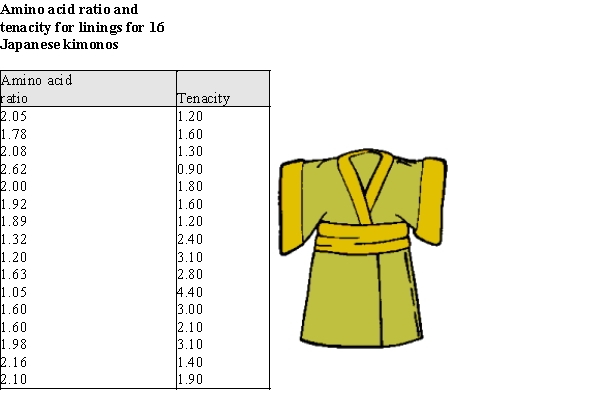Short Answer
Exhibit 4-1
The preservation of objects made of organic material is a constant concern to those caring for items of historical interest. For example, some delicate fabrics are natural silks--they are made of protein and are biodegradable. Many silks in museum collections are in danger of crumbling. It would be of great benefit to be able to assess the delicacy of the fabric before making decisions about displaying it. One possibility is chemical analysis, which might give some evidence about the brittle nature of a fabric. To investigate this possibility, bio-chemical data in the form of a ratio of the amount of certain amino acids in the fibers was acquired from the linings of sixteen 19th and early 20th century Japanese kimonos, and the tenacity (breaking stress) of the fabric was also recorded.
Using the data from the Japanese kimonos, construct the least squares best fit line predicting tenacity using amino acid ratio as a predictor. 
-Refer to Exhibit 4-1.
Approximately what proportion of the variability in tenacity is explained by the amino acid ratio?
Correct Answer:

Verified
Correct Answer:
Verified
Q1: Exhibit 4-4:<br>Biological theory suggests that the relationship
Q4: Data on x = the weight of
Q5: Exhibit 4-3<br>Paleontology, the study of forms of
Q6: In the season 2016-2017 Chelsea won English
Q6: What is it that the Pearson correlation
Q7: The Des Moines Register recently reported the
Q8: Consider the following five scatterplots. All are
Q10: The data below were gathered on a
Q11: Assessing the goodness of fit of a
Q18: If on average y increases as x